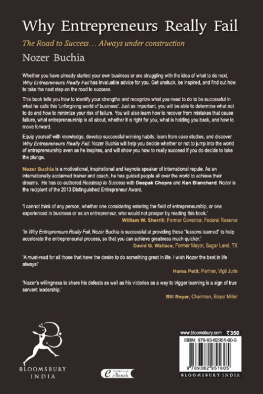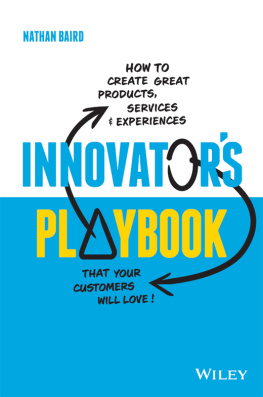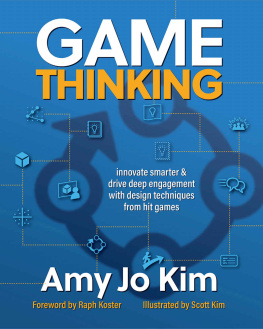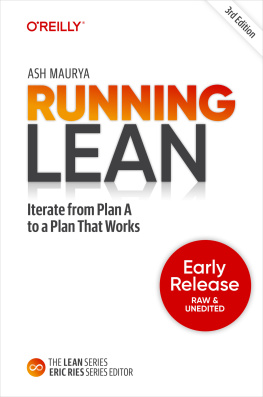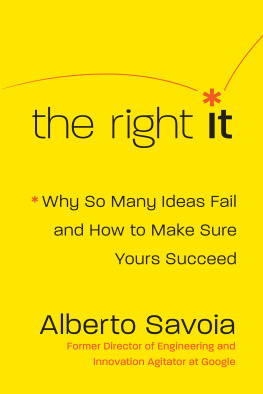FAIL BETTER
FAIL BETTER
Design Smart Mistakes and Succeed Sooner
Anjali Sastry
Kara Penn
HARVARD BUSINESS REVIEW PRESS
BOSTON, MASSACHUSETTS
HBR Press Quantity Sales Discounts
Harvard Business Review Press titles are available at significant quantity discounts when purchased in bulk for client gifts, sales promotions, and premiums. Special editions, including books with corporate logos, customized covers, and letters from the company or CEO printed in the front matter, as well as excerpts of existing books, can also be created in large quantities for special needs.
For details and discount information for both print and ebook formats, contact .
Copyright 2014 Harvard Business School Publishing Corporation
All rights reserved
Printed in the United States of America
10987654321
No part of this publication may be reproduced, stored in or introduced into a retrieval system, or transmitted, in any form, or by any means (electronic, mechanical, photocopying, recording, or otherwise), without the prior permission of the publisher. Requests for permission should be directed to , or mailed to Permissions, Harvard Business School Publishing, 60 Harvard Way, Boston, Massachusetts 02163.
The web addresses referenced in this book were live and correct at the time of the books publication but may be subject to change.
Library of Congress Cataloging-in-Publication Data
Sastry, Anjali.
Fail better : design smart mistakes and succeed sooner / Anjali Sastry, Kara Penn.
pages cm
ISBN 978-1-4221-9344-0 (hardback)
1. Business planning. 2. Business failures. 3. Failure (Psychology) 4. Problem solving. 5. Management. 6. Success in business. I. Penn, Kara. II. Title.
HD30.28.S2724 2014
658.401dc23
2014011869
ISBN: 9781422193440
eISBN: 9781422193457
The paper used in this publication meets the requirements of the American National Standard for Permanence of Paper for Publications and Documents in Libraries and Archives Z39.48-1992.
DEDICATION
To Mark, Kiran, and Harry, who teach me every day.
Anjali
To Adit, my partner in all things, and to Ava and Kayla, my purpose.
Kara
CONTENTS
INTRODUCTION
This book is about inspirations overlooked but essential companion, the perspiration-soaked work needed to deliver on genius. No matter how great your ideas, in the end your impact will be measured by the effect you have on the world. Unless youre gambling on being incredibly luckya risky bet, wed sayif you want your ideas to materialize, you need to be smart in your actions.
Were talking about bringing a new form of intelligence to your everyday efforts. You cant avoid missteps, of course. Yet theres scope for your mistakes to be smarter. With the right methods applied to their design, execution, and analysis, even the most unglamorous activities can yield new insights and fuel innovation. Workaday life may seem like an unlikely birthplace for brilliance, but its where your ideas are hammered out, tested, and refined.
Join us, and youll discover why we see great potential for you to remake your work practices so that you, your team, and your organization can do better. Your projects provide the sandbox for your actions. Using our method, youll orchestrate your teams activities to enable smart mistakes and avoid uninstructive ones. Youll work your way toward impact, step-by-step. As you go, youll be assembling the insight, knowledge, and evidence required for your ideas to succeed in practice. And as you learn to choose your path wisely and let go of false starts before they bog you down, youll reach your goals sooner.
Dont get us wrong about the other stuff. Were all for inspirationthe cracking-the-puzzle, eureka-moment flash. Chances are, youve heard stories of brilliant discoveries that altered the course of history. But lets disentangle such tales from the realities on the ground. The truth is, that to make something excellent happen, theres work, more work, and then still more work. If youre fortunate, only some of it is inefficient.
We cant change the fact that innovation entails risk and that for anything novel or creative, youll encounter failure en route to success. But because any movement from waste to value could pay off handsomely, we are looking to shift the balance of results toward the productive and away from the useless.
Our starting point is the idea that the right kind of failuresmall-scale, reversible, informative, linked to broader goals, and designed to illuminate key issuespaves the way to success. The wrong kind entails waste, discouragement, rigid thinking, and reputational damage. For every potential good failure, the world presents us with many more ways to fail badly.
We know you can do better than simply accepting the hand youre dealt. You can benefit from failure by orchestrating the right kinds of actions, then figuring out what you have learned from every step, whether or not it is immediately seen as successful. To profit from both happenstance and planned failures, you need an effective method for extracting insights.
We mined our own experience to design and test the Fail Better approach.
About Us
Personal experience stands us in good stead as your guides: like you, weve encountered failure firsthand. As sometime change agents with an interest in social impact, we may have engaged in more failure-prone efforts than many. One of us even published papers on her own failures (which, we can tell you, is rare for a business-school academic).
Our interests extend beyond our own change efforts. Weve worked closely, often over the stretch of years, with hundreds of students and managers. Weve advised CEOs and leadership teams and stood outside organizations looking in as researchers and analysts. Along the way, weve seen teams blindly execute project plans, going along with the schedule and turning in assignments even as they come to realize that their work will never be implemented. Weve seen people struggle to learn from their visible failures. Some dismiss them, others point fingers, and still others become mired in doubts or unproductive discussion. Yet weve also encountered individuals at all levels who relish failures lessons. Weve even seen people orchestrate effective mistakes to benefit their companies and organizations. To develop our ideas, we sought out these exemplars, interviewing them and watching them at work, to glean how they design projects, spend their time, and frame their work.
Our shared drive to understand how to create success when confronting the risk of failure has nurtured our own decade-long professional partnership. Together, we designed dozens of iterations of courses, trainings, and workshops that combine the classroom and the real world. By framing real-world, complex challenges, then supporting participants in tackling them, weve been able to link classroom and textbook learning with action inside organizations. Weve used these innovative platforms to test ideas, gather data, and build our own evidence base.
For instance, since 2008, our framework has underpinned a unique effort that put hundreds of MIT students to work on real-world problems amid some of the most complex and challenging settingson the front lines of health-care delivery in Africa and South Asia.
The MIT effort, dubbed GlobalHealth Lab, aims to help organizations delivering health care to the poor to tackle extreme need amid pressing resource challenges. Guided by the ideas youll soon learn, advanced masters, PhD, and MBA students put their skills and toolkits to the test in Sierra Leone, Kenya, Malawi, Zambia, South Africa, Mozambique, Haiti, India, Botswana, Uganda, Tanzania, Ghana, Nepal, and Bangladesh, each time collaborating with workers and managers in the setting over the course of hundreds of hours. Each project takes on a pressing challenge identified by the partner. By 2014, it was clear that the first seventy collaborative action projects had provided two benefits. Not only did they enable remarkable learning and growth opportunities for students, but they also delivered positive impact on the ground.
Next page

